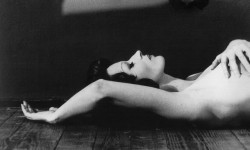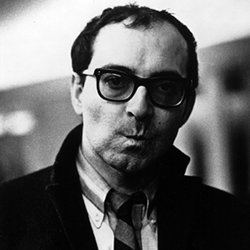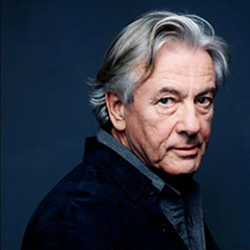
Satyajit Ray, Madhabi Mukherjee, and a Trilogy of Spaces of Female Identities: The Coward (1965) - NP Approved

Cast: Soumitra Chatterjee, Madhabi Mukherjee, Haradhan Bannerjee
Director: Satyajit Ray
Country: India
Genre: Drama
Official Website: Here
Editor’s Notes: The Coward can be found on disc 2 of The Big City, which was just recently released on Criterion Blu-ray and DVD.
The two previous films on which Satyajit Ray and Madhabi Mukherjee worked together prior to their final collaboration The Coward/Kapurush were The Big City (1963) and Charulata (1964). These two films are explicit about their female characters as their narratives’ central emotional fulcrum and perspective. Given that Ray had thought of titling The Big City at one point A Woman’s Place, the titles of these two films alone betray their concerns about female characters negotiating their identity and finding their own avenues of individual expression within the spatial and subjective confines of the domestic, be it through finding a job (The Big City) or falling in love with another man and publishing a story (Charulata). In contrast, The Coward shifts the privileged perspective from the female to the male character. The title, in fact, refers to the character of Amitabha (Soumitra Chatterjee), a screenwriter venturing outside Calcutta for inspiration to write a romance. Through circumstances that find him stranded in a small town and temporarily lodging at a tea planter’s bungalow, what Amitabha finds is not inspiration for a romance but rather shockingly the incarnation of a past romance of which he had pulled out. The Coward is arguably one of the darkest and most cynical films in Ray’s oeuvre in mood and character, and is therefore gripping. It is gripping in no small part because Ray decided to do the film with Mukherjee and Chatterjee in mind.
The Coward is gripping also because of its compact running time of seventy-four minutes (it was released as one half of a double bill with another short feature, The Holy Man/Mahapurush [1965]).
The Coward is gripping also because of its compact running time of seventy-four minutes (it was released as one half of a double bill with another short feature, The Holy Man/Mahapurush [1965]). It is also fairly minimalist in its cast, setting, and time period. The narrative centers on Amitabha; Bimal Gupta (Haradhan Bannerjee, who also appears in The Big City), the tea planter who offers Amitabha a room for the night; and Karuna (Mukherjee), the woman with whom Amitabha had failed to make a commitment years ago and who is Bimal’s wife. In a nearly twenty-four-hour period, the three share a roof, converse, eat meals together, and go on an excursion/picnic before the Guptas drop off Amitabha at the train station the following evening.

However, this description refers only to the surface of things. Paralleling such outward activity is the inside of things, as it were: Amitabha’s inner turmoil in the face of Karuna and remembering their shared, bittersweet past. Ray visualises Amitabha’s turmoil through the way he arranges the actors in relation to each other and camera placement, hence shots in which Amitabha and Karuna are on either ends of the frame with Bimal’s back/face to the camera separating them, or Amitabha in the background and Karuna in the foreground either facing each other or one’s back turned to the other while Bimal is to the side somewhere, allowing Amitabha surreptitious glances at Karuna. On this note, the opinion that the camerawork in Ray’s films ‘deteriorated’ in quality after the departure of his frequent cinematographer Subrata Mitra after Charulata (they had a falling out) is rather exaggerated given The Coward. In fact, the film opens with a nearly five-minute long take that shows how Amitabha and Bimal get acquainted through a striking triangular set-up between the setting, actors, and camera.
To return to the narrative’s love triangle, when he can, Amitabha steals conversations with Karuna to understand her life now, married to Bimal and living in isolation outside of Calcutta. To Amitabha and the spectator, Karuna is formal, impenetrable, ambivalent, and even somewhat spiteful. At the same time, Amitabha is flooded by memories of what happened between them triggered by the tiniest of details: the back of Karuna, her hand on Bimal’s shoulder. Thus, a fragile tension between interiority and exteriority, past and present, runs throughout the film that gives it a dynamic quality. Amitabha’s memories of Karuna take the form of three flashbacks evenly spread throughout the film and detail their separation, their meeting, and a date. These flashbacks are affective and effective because they go beyond their basic purpose of conveying what happened. They not only reveal Karuna’s character and feelings, to such a degree that one may forget that these memories are Amitabha’s and not hers, but they also suggest the kind of psychological journey that has left her hardened and cold in the present, following Amitabha’s lack of nerve and confidence regarding their relationship in the past.
Ray visualises Amitabha’s turmoil through the way he arranges the actors in relation to each other and camera placement, hence shots in which Amitabha and Karuna are on either ends of the frame with Bimal’s back/face to the camera separating them…
In the flashback of their separation, Karuna is vibrant, direct, and sensitive, as she tells Amitabha that her uncle wants to end their relationship and ‘put her in her place’ by taking her away from Calcutta. She refuses to be put in her place and, like Arati in The Big City, intends to get a job to intitiate her independence. The irony is that Amitabha turns out to be as volatile as Karuna’s uncle to her desire to carve out her own sense of place when he fails to support her in her suggestion of marriage. In the flashbacks of their first meeting and a date, Karuna is bubbly, appealing, and highly expressive. A shot of Karuna in the present time during the picnic encapsulates how much she has changed: facing the camera, expressionless and wearing sunglasses, Karuna from the shoulder up occupies the left side of the frame in the foreground while Amitabha stands behind her in the background, pleading with her to give him a sign of her unhappiness with her present life and give him another chance.
Unlike Charulata, here we do not get the inside perspective of an incompatible marriage; we remain on the outside like Amitabha, no matter what we may conclude based on seeing Karuna and Bimal together. Yet for all of Karuna’s stony demeanour, from her current place of being (however restrictive) she exercises choice and will, which is what catches Amitabha off guard the most. By pleading for an affirmation of her unhappiness, Amitabha actually reveals his shallow understanding of Karuna, past and present. His lack of understanding of Karuna will render her final exchange with him at the train station all the more startling to him and all the more revelatory to the spectator.
With Karuna, Ray gives Mukherjee as complex and fascinating a role as that of Charulata and Arati. Mukherjee’s performance (alongside that of Chatterjee) makes of The Coward a powerful, albeit cynical, conclusion to her collaboration with Ray. Furthermore, the inclusion of The Coward in the Criterion Collection’s two-disc DVD edition of The Big City should allow spectators to realise that it is just as a significant a film as the fêted Charulata that precedes it in this trilogy of spaces of female identities.
Related Posts
![]()
Rowena Santos Aquino
![]()
Latest posts by Rowena Santos Aquino (see all)



























